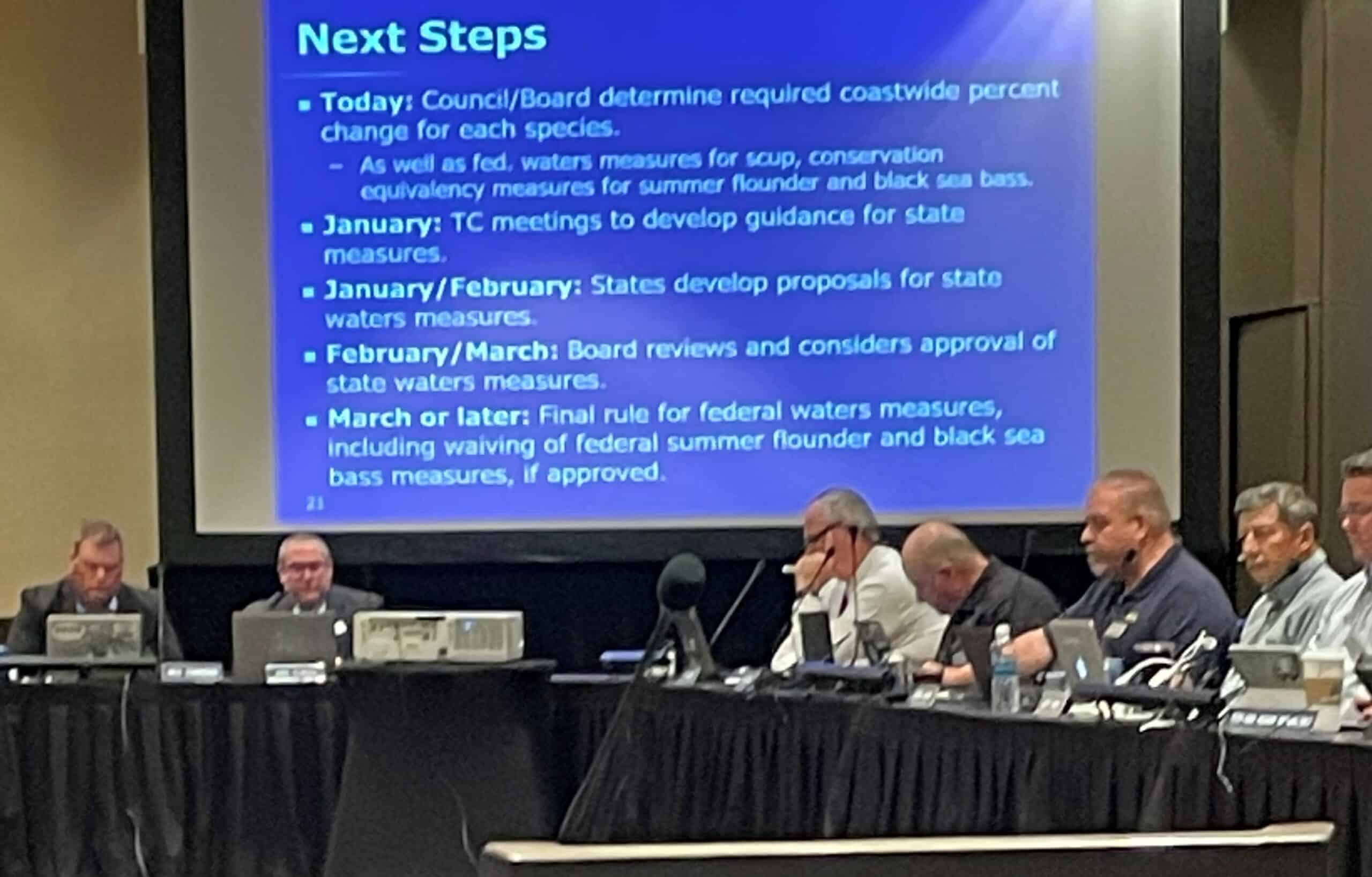In December, I attended the Mid-Atlantic Fishery Management Council (MAFMC) meeting in Annapolis, MD. Most of this meeting included participation from the Atlantic States Marine Fisheries Commission because the two bodies jointly manage several recreationally important species. The focus of the meeting was finalizing fishery specifications (recreational catch limits) for 2023. This recreational specifications process is different from previous years because managers are using a new harvest control rule to assist in setting recreational bag, size and season limits.
Harvest Control Rule Framework and Recreational Fishery Models
The harvest control rule aims to bring more regulatory stability to recreational fishing by incorporating both stock status and the limitations of catch estimates when determining the direction and magnitude of a management change.
Regulating recreational fisheries is largely about crafting regulations (bag, size and season limits) to achieve a specific catch level. On paper, this is relatively easy to accomplish, but in reality, it is arguably the most challenging fishery management exercise in existence. This is largely because on paper, scientists make assumptions about how the fishery (anglers) will behave and largely those assumptions lack data, are oversimplified, and usually wrong. As a result, modelers have recently tried to incorporate angler behavior as a factor when predicting catch, an improvement over previous methods. However, those models are still under continuous development with results being relatively untested. At this meeting, the Council reviewed those models and the various results they produced as part of the specification setting process for 2023 and implementation of the new harvest control rule.
Scup and Black Sea Bass 2023 Specifications
As a reminder, scup and black sea bass are approximately twice their biomass targets and are not experiencing overfishing meaning they are very healthy.
Instead of using a point estimate of catch, the new harvest control rule looks at the range of expected catch estimates (i.e., confidence interval from models mentioned above) and compares that range to the upcoming catch limit (see slide 31 for a good visual). If next year’s catch limit falls within the expected range of catch, then regulations are expected to perform well, but if expected catch falls outside the expected range, then regulations likely need adjustment (in either direction).
Given the continued high levels of expected catch for scup and black sea bass, the current regulations are not projected to constrain catch to the expected range and therefore, following the HCR, will be subject to a 10% reduction. This is better than the previous methodology that did not consider an expected range of catch or stock status when adjusting measures. For example, the previous methodology would have required an approximate 35% reduction for scup and 45% reduction for black sea bass because it only used a point estimate of catch and did not consider the health of the stock when determining the magnitude and direction of its management change.
ASA is still frustrated that the recreational sector is taking a 10% reduction on populations that are assessed at 2 times their biomass target, but the HCR has taken an important first step towards addressing this disconnect. Specific size, bag and seasons that achieve a 10% reduction will be developed over the next few months before implementation in early 2023.
Summer Flounder 2023 Specifications
As a reminder, summer flounder is not overfished, and overfishing is not occurring. Spawning stock biomass is 86% of its target level and currently in an increasing trend. Although there will be a minor increase to the annual catch limit for the recreational sector in 2023, following the HCR, recreational bag, size and season limits are not expected to change
2023 Council Action Planning
Every year, at its December meeting, the MAFMC finalizes its action plan for the following year. To ensure continued progress on recreational management reform in the Mid-Atlantic, ASA submitted a letter requesting prioritization and additions to the Council’s 2023 action plan. Several of these requests were included in the Council’s 2023 action plan including continued development of the recreational harvest control rule, revisiting recreational accountability measures, and consideration of allowing sector transfers between the commercial and recreational sector.
Council Comments on Hudson Canyon Marine Sanctuary Proposal
The MAFMC received an informational presentation from the Office of National Marine Sanctuaries regarding the proposed designation of Hudson Canyon National Marine Sanctuary. As part of the designation process, section 304(a)(5) of the National Marine Sanctuaries Act requires the appropriate council or fishery management authority the opportunity to prepare draft fishing regulations as they deem necessary to implement during the sanctuary designation. The MAFMC voted unanimously to recommend that fishing regulations are NOT necessary within the Hudson Canyon Sanctuary designation. Additionally, the sanctuaries staff is setting up a Sanctuary Advisory Council for Hudson Canyon that will represent a variety of interests (including recreational fishing). ASA supported that additional fishing regulations are not needed and will assist in soliciting applicants from the Sanctuary Advisory Council.
For more information on ASA’s Atlantic efforts, feel free to contact Michael Waine, Atlantic Fisheries Policy Director or go to the ASA Advocacy Page.
Share This Article, Choose Your Platform:
Recent Posts



